Umbrella Tree Woes: Well-known Houseplants Part Company
Posted in Interesting Plant Stories on June 30, 2015 by Gregory Plunkett
Gregory M. Plunkett, Ph.D., is Director and Curator of the Cullman Program for Molecular Systematics at The New York Botanical Garden.
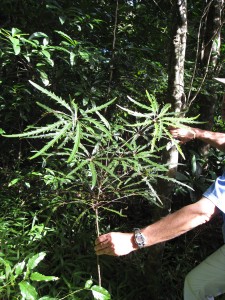
In 1912, the eminent horticulturalist Harry James Veitch helped move the Royal Horticultural Society’s Great Spring Show to the Chelsea section of London, where his family’s famous nursery firm, James Veitch & Sons, was headquartered. The show was thereafter known as the Chelsea Flower Show, an annual event that is considered the world’s most famous horticultural exhibition. But while Harry was busy running the family firm, his brother John Gould Veitch was one of a select group of Victorian explorers who traveled the world seeking new plants to bring into cultivation.
One of these plants was Aralia elegantissima, which was first introduced to the world during the Great Spring Show of 1873. Since then, it’s been called by many other names, including Dizygotheca elegantissima, Schefflera elegantissima, and Plerandra elegantissima. As the common element in those names suggests, its leaves are “most elegant,” with slender, dark-green and smartly toothed leaflets, not unlike those of Cannabis. As it turns out, wild populations of this “False Aralia” are entirely restricted to the South Pacific island of New Caledonia, where Veitch originally discovered it. Today, it’s widely cultivated as a “tropical foliage plant,” gracing shopping centers and fast-food restaurants from New York to London to Tokyo. John Veitch would be duly proud of the success of his introduction. Unfortunately, the plant has not fared as well in its native New Caledonia, where it is on the brink of extinction due to habitat loss.
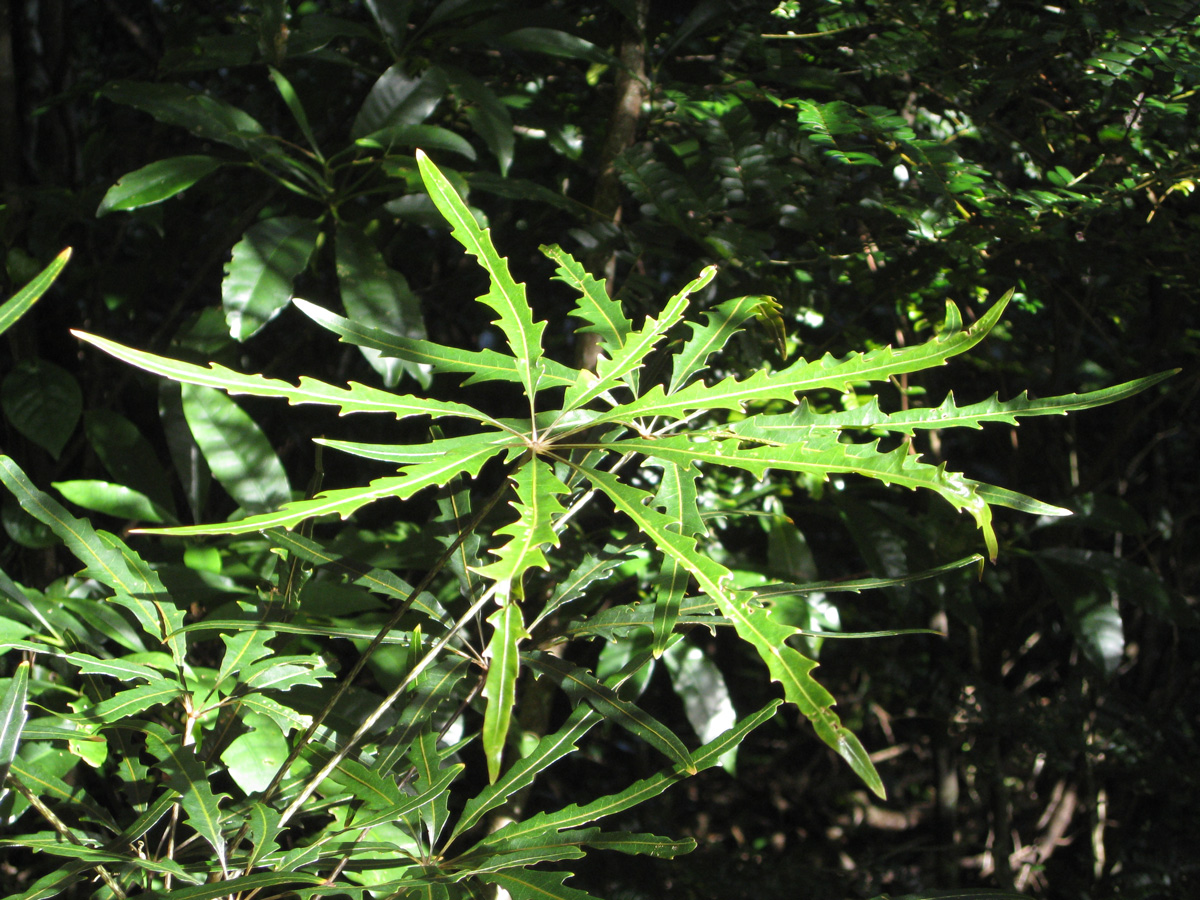
Thirty years prior to the introduction of Aralia elegantissima, a similar plant from the same family (Araliaceae) was described from northeastern Australia, with the common name of “Queensland Umbrella Tree” (Brassaiopsis actinophylla). And in the early 20th century, a similar “Dwarf Umbrella Tree” (Heptapleurum arboricola) was described from Taiwan, but with much smaller leaves. Both umbrella trees share the beautiful, palmately divided leaves found in the false aralia, and as a result, all of these plants are now broadly cultivated, forming common elements of the artificial, climate-controlled urban jungles we have created in the world’s malls and office buildings.
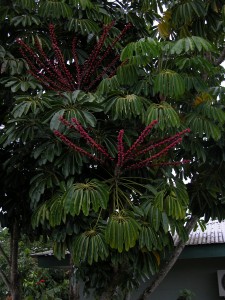
The striking similarity of the umbrella trees to the false aralia eventually led botanists to gather these three species into a single genus, Schefflera, the name under which all three plants are currently marketed. But this shift in names also involved over 600 additional plants (and as many as 400 additional species awaiting description), rendering Schefflera one of the 30 largest genera of flowering plants. The vast majority of these thousand-some species are rarely or never cultivated. Some have been seen and collected only once in human history, and others have undoubtedly gone extinct before we ever got to know them.
The story does not end there. The challenge of understanding how 1,000 species are related is a daunting task. Imagine sorting through your family tree if you had a thousand brothers and sisters! It turns out that Schefflera was holding onto some secrets—secrets only DNA could unlock. So, at The New York Botanical Garden, I am using DNA-based techniques to unravel the mystery of Schefflera’s evolutionary history. Just as birth records can help us to reconstruct the history of our family trees through historical time, changes in plants DNA sequences can provide clues as to how they are related through evolutionary time. The DNA data I am collecting has provided some surprising results.
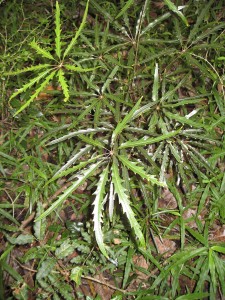
Among these: Schefflera is really five different genera, not one. It’s a little like discovering what you thought of as your “immediate family” is really only a group of distant cousins. According to the rules of naming plants, only one of these five groups gets to keep the name Schefflera. In this case, it’s a small group of only eight species, including one that was originally discovered during Captain James Cook’s journeys to New Zealand. The other 900-plus species will need new names.
Despite the remarkable overlap in the appearance of these five groups of Schefflera, they share very little in common geographically. Only two groups are found in the same geographic area: the Pacific Scheffleras, which include the New Zealand species plus its seven relatives, and a second group comprising the false aralia and about 45 of its close relatives. Both of the cultivated umbrella trees belong to a large group centered in tropical Asia and nearby Australia. The remaining two groups have almost no cultivated members. One, centered in the New World, has radiated throughout the tropical Andes and Brazil, while the last group is centered on Madagascar and Africa.
These findings have created chaos in how we name the species once called Schefflera. To sort this out, I am working closely with two colleagues, Dr. Pete Lowry of the Missouri Botanical Garden and Dr. David Frodin of the Royal Botanic Gardens, Kew. Together, we are working to create a record of family relationships that more closely reflects the evolutionary history of these attractive plants and to find explanations for why such distant relatives have repeatedly evolved the same features in such far-flung regions of the globe. One thing seems certain, however: the close-knit household among the Scheffleras has ended, and breaking up is hard to do!
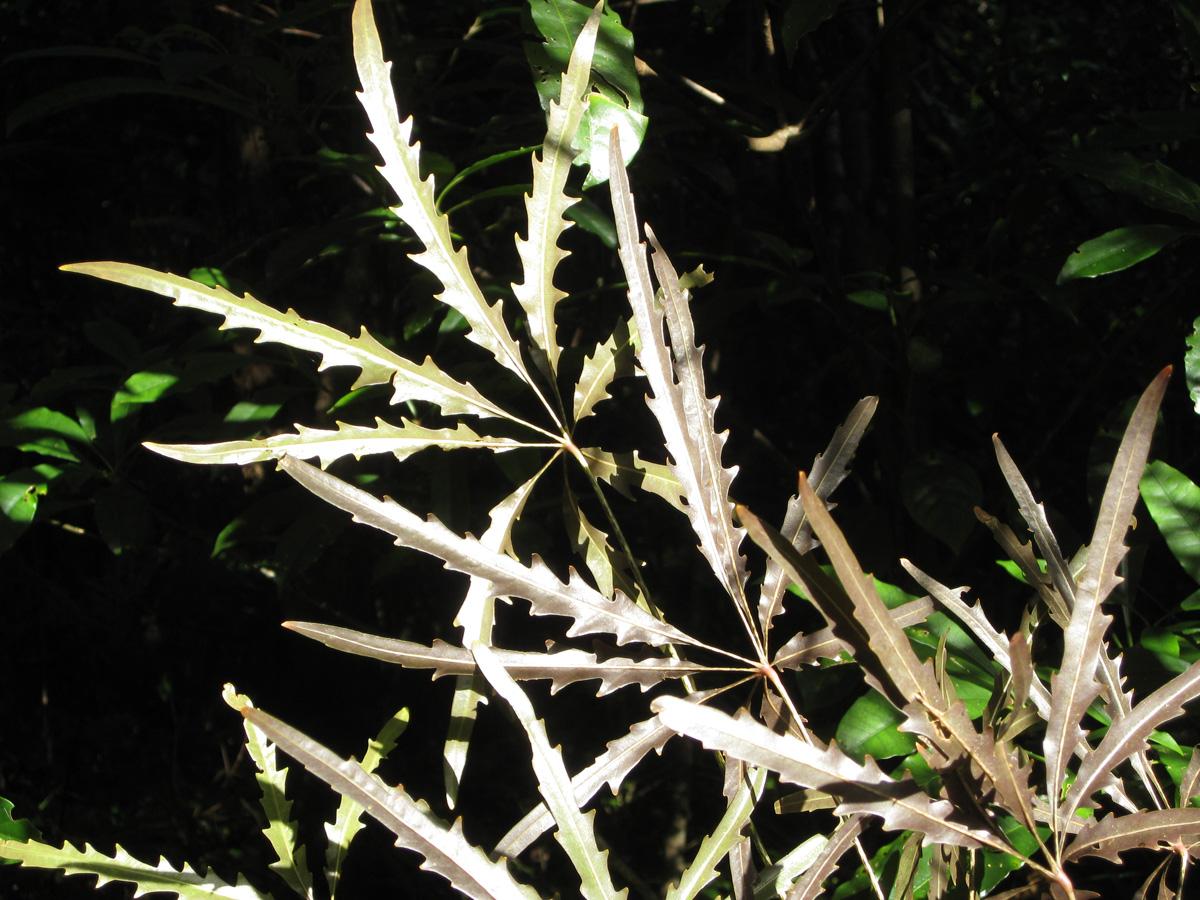


Fascinating and informative. Makes us realize again “How little we know!”
Thank you for expanding our knowledge of the plant world.